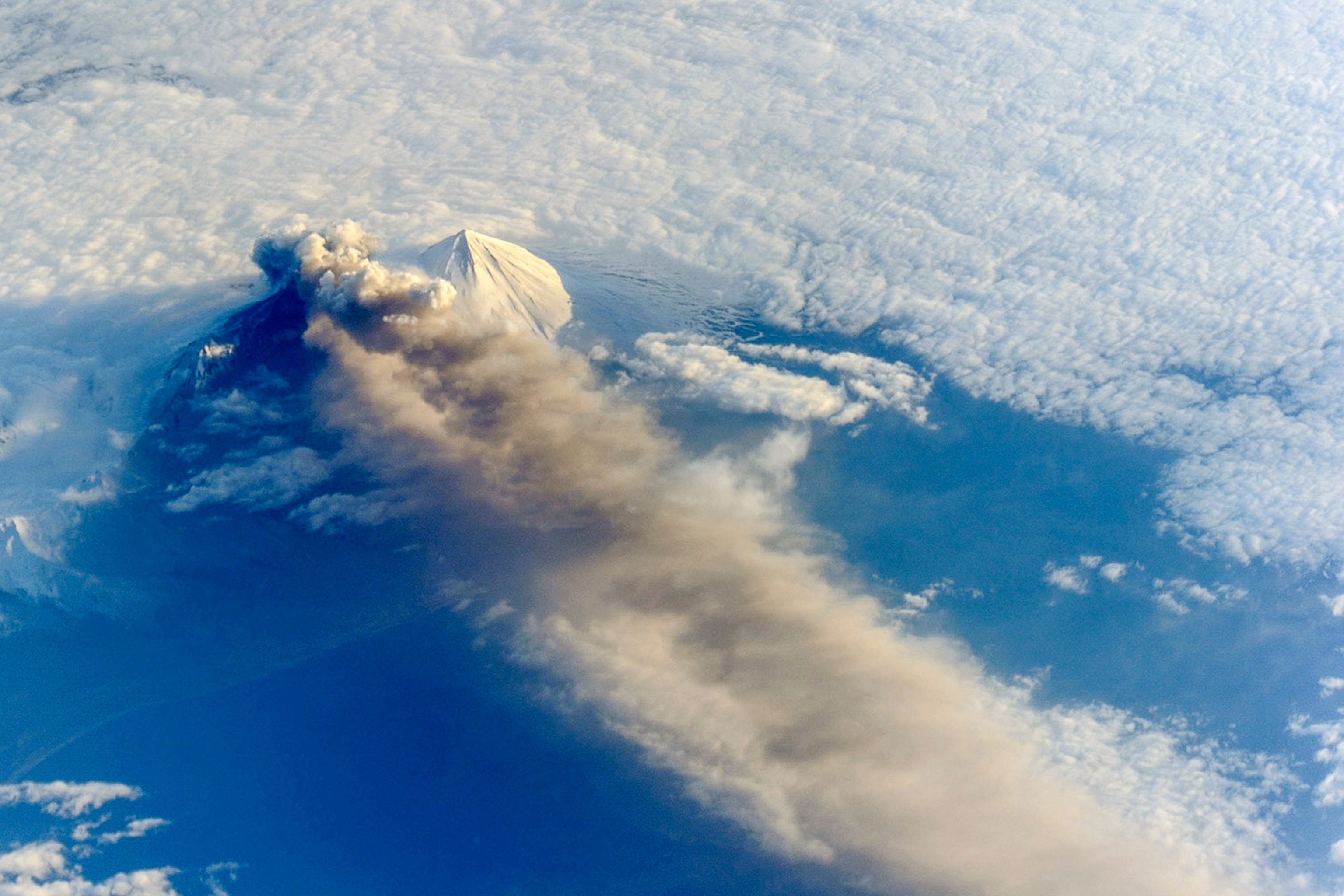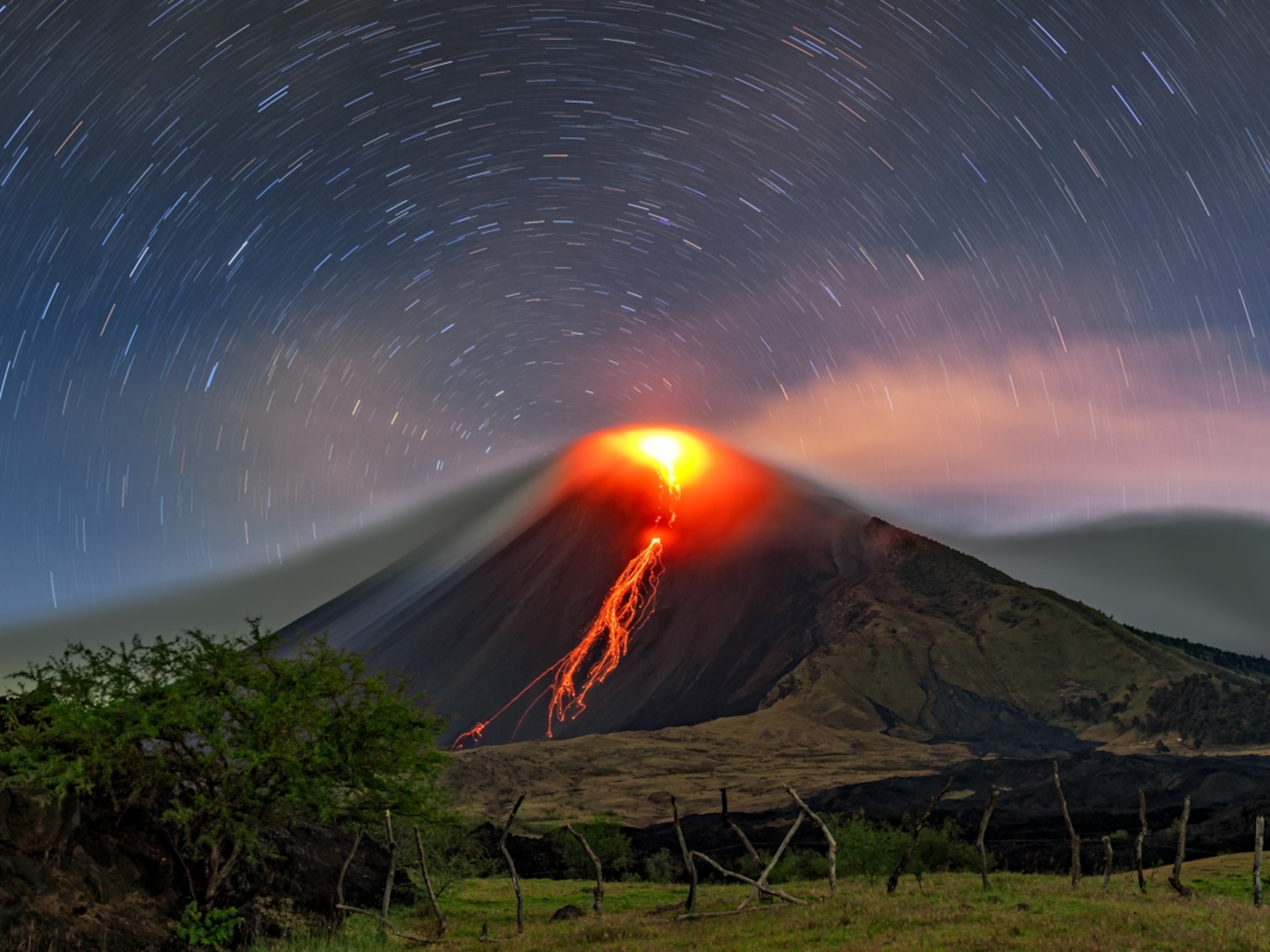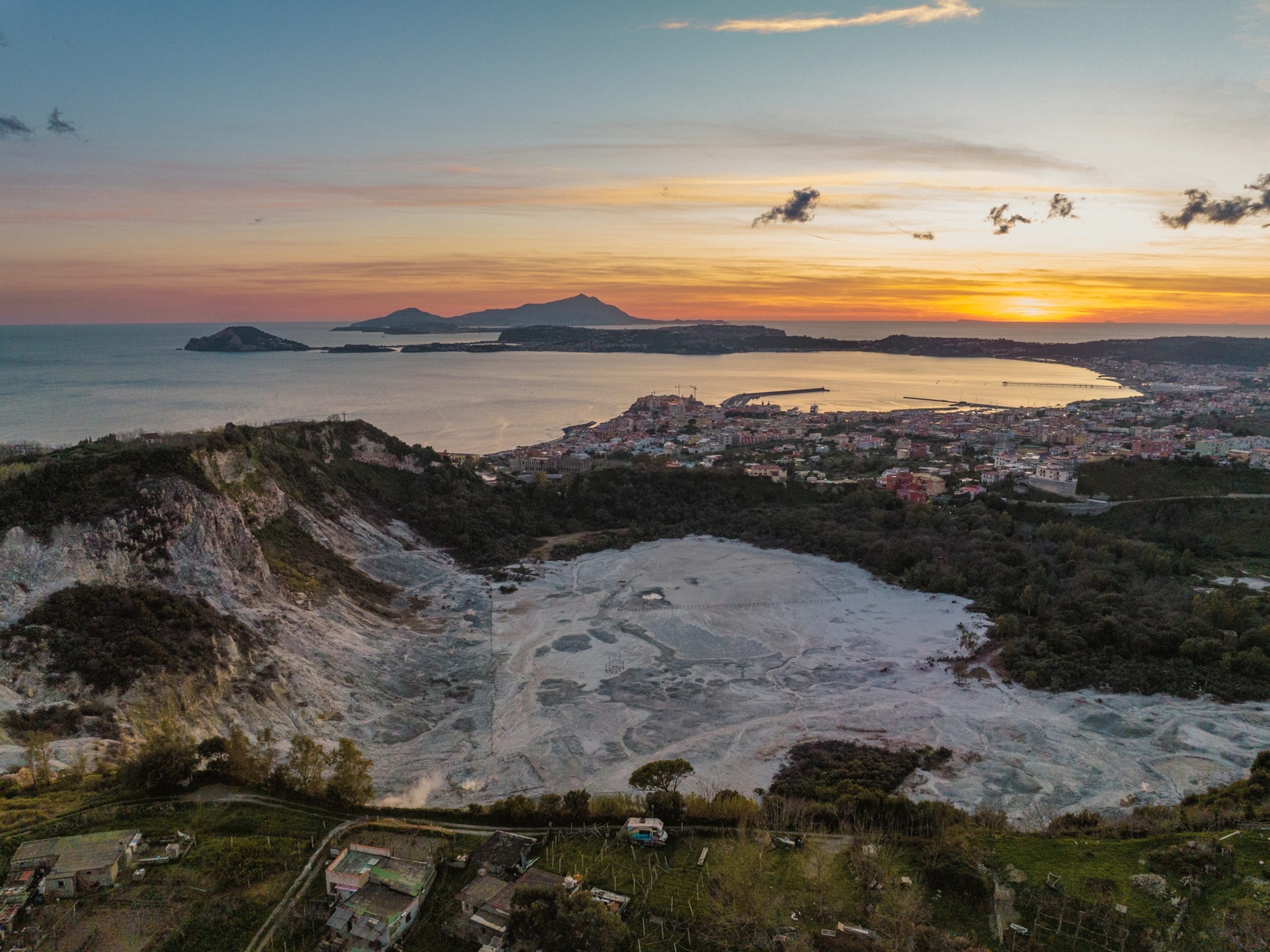
Erupting Alaska Volcano Puts on Fiery Display
Pavlof Volcano emits lava and giant ash clouds.
One of Alaska's many active volcanoes is releasing arcs of lava and plumes of ash this week that have provoked flight warnings for the region.
The 8,262-foot (2,518-meter) Pavlof Volcano on the Alaska Peninsula, 590 miles (950 kms) southwest of Anchorage in the remote wilderness, has been shooting lava to a height of approximately 500 meters.
A plume of ash, meanwhile, reached 24,000 feet (7,315 meters) into the air on Monday and drifted east for 50 miles (80 kilometers), prompting authorities to issue the most serious warning level for aviation, red.
By Tuesday night, the warnings were downgraded one level to orange, or "watch," thanks to diminished activity and clear weather that improves visibility.
Ben Edwards, a volcanologist at Dickinson College in Pennsylvania who had done work in Alaska, says officials have been concerned because many commercial aircraft fly over the area heading to and from Asia. Ash can disrupt visibility and even cause mechanical problems in airplanes, although so far there has not been evidence of harm from Pavlof.
Aircraft have so far been able to fly above or around the ash, says Edwards, without appreciable disruption in service. "But officials are still monitoring the situation," he says. (See "Pictures: When Snow and Ice Meet Lava.")
When blocks of the hot rock from the eruptions hit the ground, they cause melting of the abundant snow. That causes flows of material a few miles down from the volcano cone.
Such hot mud flows, called lahars, extended for miles to the coast during the 1980 Mount St. Helens eruption, although Edwards notes that Pavlof doesn't have as much explosive power.
History of Eruptions
Pavlof has erupted 20 to 30 times over the last hundred years, says Edwards, who has received funding from National Geographic. It last erupted with an ash plume on June 26, 2013.
Edwards says that while Pavlof is not as explosive as Mount St. Helens, it's more explosive than the well-known and highly active volcano Kilauea in Hawaii. Its lava is generally basaltic andesite, which is common for the Aleutian Arc of volcanoes of which it is a part and results in eruptions of intermediate force.
Geologists often describe the conical Pavlof as a "Fuji-style" volcano, since it resembles the iconic Mount Fuji in Japan.
Edwards adds that Pavlof has not been well studied by geologists because of its remote location. "It is a major expedition to just fly over it, let alone do any work on the ground," he says.
Scientists had not detected increased seismic activity under the mountain before this recent eruption, although they did note through satellite data that temperatures at the top spiked.





